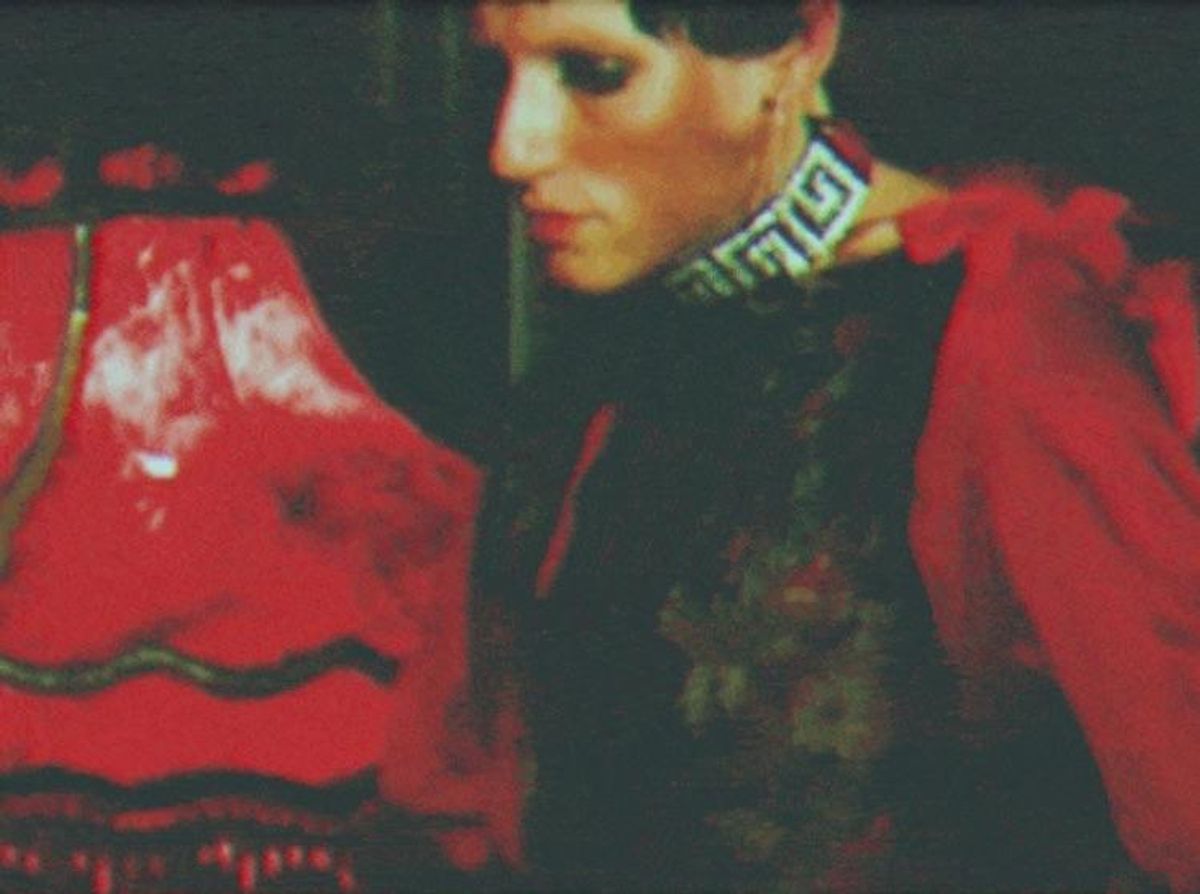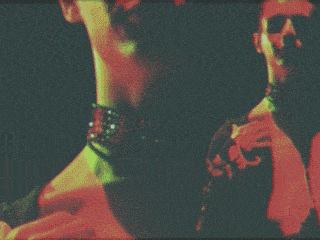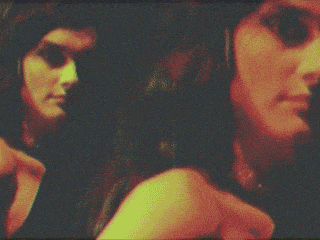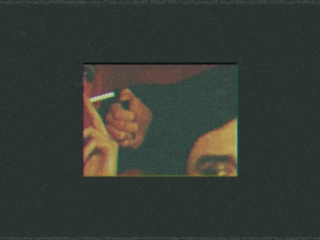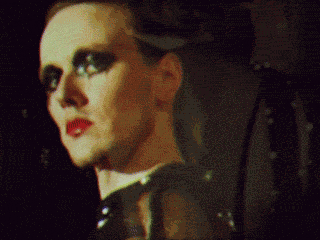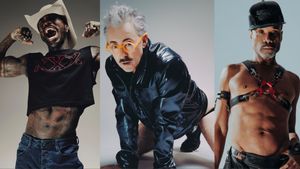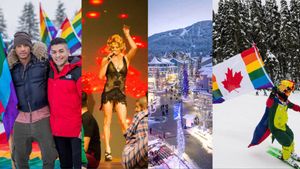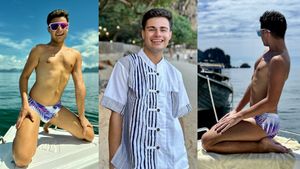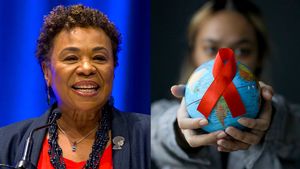"I always have one particular muse in my mind: Marlene Dietrich," laughs up-and-coming designer Lavan Chxeidze. It's fitting, then, that we are sitting on a red velvet couch, the walls of the room a matching blood-hue, intricate patterns and lush fabrics filling up the space where around us a bevy of beautiful queer models are doing their hair and makeup while sipping on apple martinis.
Lavan's inspirations speak for themselves, a combination of the 1920s golden age with 90s grunge allowing him to create deconstructed garments that flow elegantly, dramatically, and seductively all at once. The 11-piece collection, which was mostly comprised of robes (some sheer, some Swarovski-adorned), is a coherent statement to his identity and to the type of beauty he wants to inject the New York fashion scene with. Dressed in a black deconstructed dress (his own) and combat boots, Lavan talks everything from vampires and homophobia to that time he almost died.

OUT: This collection is called "Problem Child." What is behind that?
Lavan Chxeidze: I was born in the Republic of Georgia. I came from a family of religious people. My interests were always problematic, whether it be wearing skinny jeans, or eyeliner, or just being gay in general. Religion really controls how people think in Georgia. Homophobia is really extreme there; people get killed.
I moved here when I was eight, but things that happened there still stayed with me. When I was in high school, I was always called a fag and couldn't walk down the block without being "the fag of the block." It's hard for a gay person to live in this country or just in general.
I thought "Problem Child" was a fitting for my first collection because there are guys in dresses, trans models, guys in makeup, sheer dresses, and complete nudity--it's as queer as you can possibly get.
The relationship of fashion with self-expression gives it that extra power. What is the strength that fashion has given you and the community to say "fuck you, this is who I am?"
I started in Fine Arts because I have a long list of family that were painters, but painting a picture wasn't really doing much for me; it was beautiful, but then you just hang it up there. When I physically discovered Galliano and McQueen I was absolutely blown away. When I saw that you could actually take fashion and use it as a political platform and you could tell stories through it, that it's not just a clothing rack...that's when I realized, "wait, this all makes sense...I need to be in fashion." I look at fashion as an armor; I think even if you're not feeling confident, you put something on and you have this new persona or you're accentuating your persona. If you're shy you could literally boost yourself up and it makes you realize, "I felt that feeling, so it's actually inside me."

There is a feeling of "noir glam" to your work. Are you a fan of vampire movies?
Anne Rice is my favorite author, what can I say. (Laughs)
Favorite vampire movie?
If I had to really choose, Interview with the Vampire really shaped my taste in how I like men portrayed. I kind of hate that whole "menswear/womenswear" thing--I don't look at it that way. For me the sexiest guys ever are usually rockstars, for the simple reason that they exude femininity and masculinity, and for me that's just the ultimate sexiness.

What is something that would surprise people about you?
Sustainability and animal rights are very important to me. I would never use fur or leather. Some of the looks are completely upcycled; there's old vintage scarves recycled into new dresses. I don't want to just make beautiful dresses - that's boring to me. I want to create a statement...I don't want it to be something that's shoved down people's throats, it's just my identity as a person. When people buy my clothing they're not going to think about the sustainable aspect, but it's a part of the DNA of the brand.
When I was 19, I was dying and I had to have a heart transplant. That was a major part of learning what I'm trying to represent in my life. I realized this is my route and it's what I need to do. I love dressing people up, being glamorous, but also being conscious of how we are impacting the world around us because it harbors back to, "what is my second chance for living about?" I was going to school when it randomly just happened. I was unconscious and then I was in the hospital and the doctor was like, "Hey, you're dying." I was like, "Fuck (laughs)."
What was it like to hear that?
It was weird. It felt like I was in a film. I was laughing and my mom was in the corner, sobbing her heart out...For two months I couldn't even walk. I had to re-learn how to move my arms. It was a really long, complicated process, but, if anything, it made me have more interest in fashion and made me realize that it's what I want to do. At such moments you rethink everything.

What's the biggest change you've seen from when you first started having an interest in fashion to now?
I don't want to be rude, but I think fashion used to be very beautiful and romantic. The reason why I got into fashion was because it was ethereal, it took you to different realms, it brought fantasy to you. What Galliano and McQueen did was absolutely surreal; it was pure theater. That's what I thought fashion was about, and now we're in this horrible realm of minimalism or completely tasteless or pointless maximalism. There's no new sense of experimentation or risk, so I feel like I'm aggressively trying to tear down that door and as a young designer I'm trying to say something else. I'm not trying to join the system, I'm trying to create my own system.
Who excites you in fashion?
Just John Galliano, to be honest. He can do anything and I will just fall in love with it.
If you could dress anybody in your designs, who would it be?
Troye Sivan; I love that he's expressing his gayness. Tilda Swinton. And Daphne Guinness, of course.
Photos and GIFs: Kathryn Chadason
